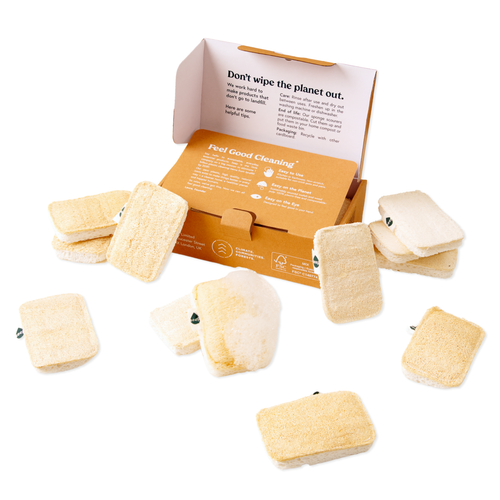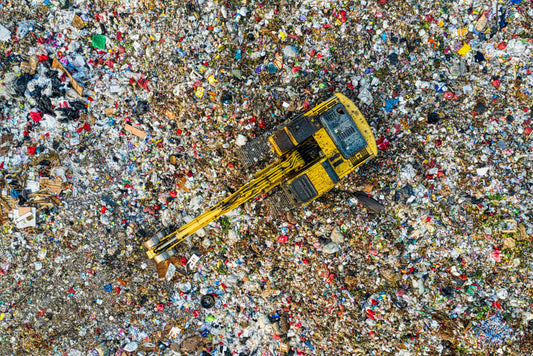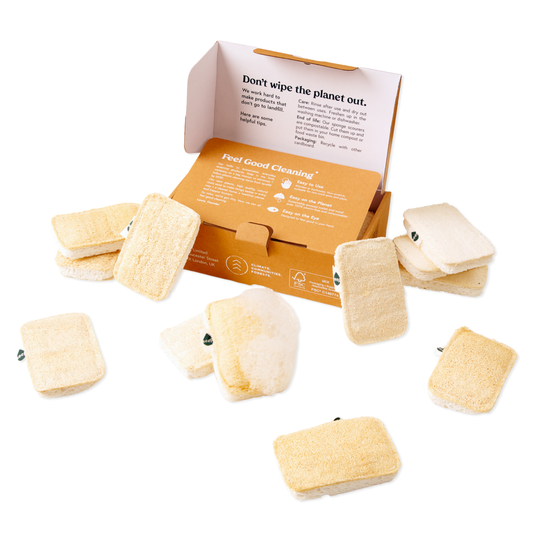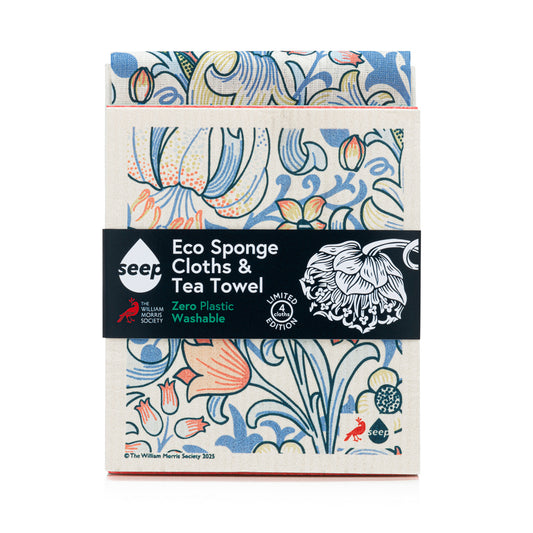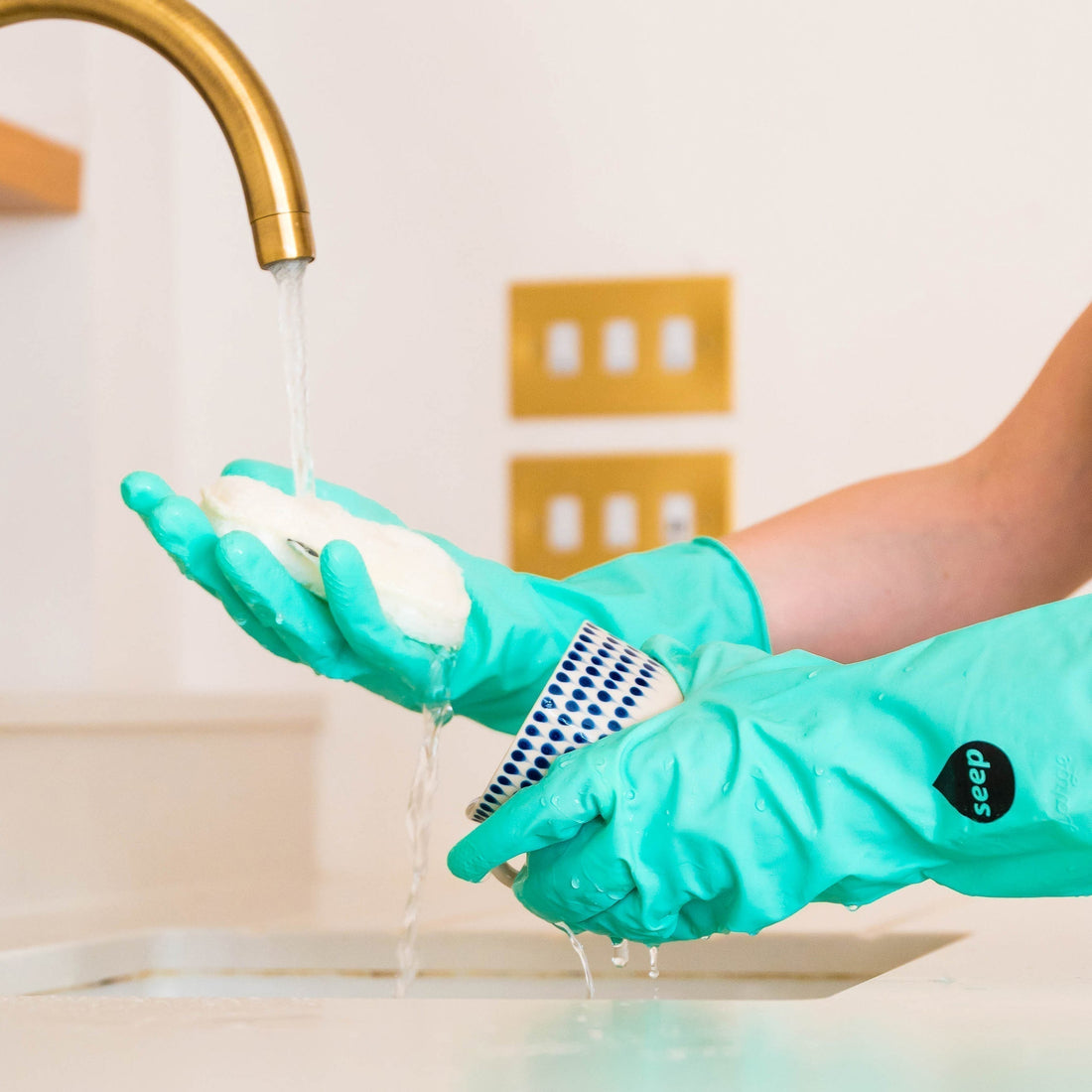
Did you know that your dirty sponge could harbour up to 45 million bacteria per square centimeter? That means that your sponge could host as much bacteria as the inside of your toilet. Who likes cleaning their cleaning tools (probably no one except the true clean freaks) but it needs to be done! So, let’s get started…
Frequency Of Cleaning And Replacement
For your sponge to be performing at its prime and not getting bacteria everywhere, we recommend cleaning your kitchen sponge at least once a week. After about 4 weeks, it’s usually time to reach for a new one, but this depends on how much you use it. When getting rid of your Seep sponge you can home compost it or pop it in your food waste caddy.
How Do You Clean A Kitchen Sponge
Dishwasher
- Pop your dirty sponge in your dishwasher, amongst your plates and dishes.
- Run on your regular cycle, slightly hotter is ideal for removing bacteria.
- Take it out of the machine and air dry before using it again.
Washing machine
- Pop your dirty sponge in the washing machine, we usually wash ours with our tea towels.
- Wash it at 40C degrees.
- Leave to dry before using it again.
White vinegar
- Pour white vinegar into a bowl, no need to dilute it with water.
- Soak your dirty sponge for 5 minutes - make sure the sponge is fully covered.
- Rinse with warm water - you don’t want that vinegar smell to linger on your beautiful sponge.
- Let it dry before using it like normal.
Notes On Cleaning A Kitchen Sponge
While sponges can harbor a significant amount of bacteria, not all of these microorganisms are harmful. However, regular cleaning is still essential to prevent the spread of potentially dangerous pathogens.
While the methods mentioned in this article can reduce bacteria, they may not eliminate all harmful bacteria, especially if the sponge is heavily contaminated.
Alternative to Sponges: Dish Brushes
Dish brushes are emerging as a more hygienic alternative to sponges for washing dishes. Here are some reasons why you might prefer them:
Hygiene
Brushes tend to dry faster than sponges, which reduces the likelihood of bacterial growth. Studies have shown that bacteria like Salmonella and Campylobacter survive longer in sponges than in brushes, where they often die within a few days.
Durability
Dish brushes can last longer than sponges if properly maintained.
Aesthetics And Versatility
Dish brushes maintain their appearance over time and can be used for various cleaning tasks beyond washing dishes, such as cleaning surfaces or scrubbing hard-to-reach areas.
Now you’re more than ready to spice up your disinfecting sponge routine. These three different methods will be perfect to use once a week for a month before disposing of the sponge.
